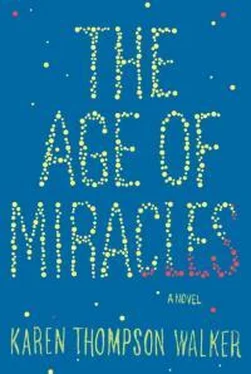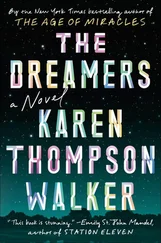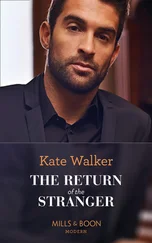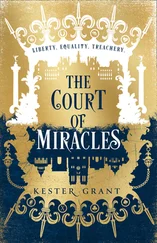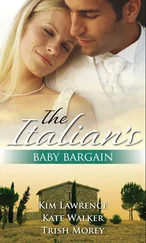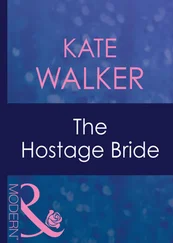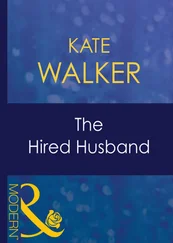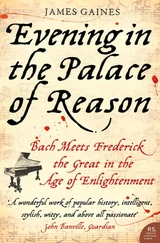I remember those birds as well as anything else from that time: the rotting feathers and the raisin eyes, the fluids staining our streets. And there were rumors even then that the affliction might soon spread to us.
Sylvia, my piano teacher, kept finches. They were small and fat, and they lived in a bell-shaped metal cage in the corner of her living room. Here was where I spent half an hour every Wednesday afternoon, learning—or failing to learn—to play the piano. And here, just minutes after me, was where Seth Moreno sat as well, his lesson always immediately following mine, his fingers brushing the same keys mine had, his feet pressing the same pedals that my feet had so recently pressed. Often the idea of him hung over my whole lesson. But on this day, it was the finches that distracted me: I was listening for signs of the sickness in every sound they made.
“You haven’t been practicing, have you?” said Sylvia. I’d made a slow, pecking attempt at “Für Elise.”
Sylvia sat beside me on the glossy black bench, her slim bare feet resting near the brass pedals below. She wore a white linen dress and a string of large wooden beads around her neck. I liked the way she looked. She was two kinds of teachers: She also taught yoga down at the Y.
“I practiced a little,” I said.
That was how my lessons always began. Maybe if I had known that this was one of the last times I would ever sit on that bench, I would have tried a little harder.
“How are you ever going to improve if you don’t practice?”
One of Sylvia’s finches cried out from the cage in the corner. They did not sing so much as squeal, each chirp like the squeak of a rusting hinge.
Officials were reluctant at first to connect the deaths of the birds to the slowing. There was no evidence, they said, that the two phenomena were linked. Experts pointed instead to more familiar causes, like disease: avian flu, a worldwide pandemic. But tests had come back negative for all the known strains.
However, we, the people, did not need more proof. We did not believe in spurious correlation. We rejected random chance. We knew the birds were dying because of the slowing, but as with the slowing itself, no one could explain why.
“You should be practicing now more than ever,” said Sylvia, gently pressing her palm to my lower back to make it straight. My posture always melted as the lesson wore on. “Art thrives in times of uncertainty.”
Piano lessons had been my mother’s idea. I didn’t like the piano much, but I liked Sylvia and I liked her house, which was the same model as ours but unrecognizable to me on the inside. Hardwood floors instead of carpet fanned out across the rooms. Leafy houseplants thrived in every corner. Sylvia didn’t believe in chemicals or air-conditioning. Her house smelled like tea and birdseed and incense.
“I’m going to play it through once,” she said. “And I want you to close your eyes while I’m playing, and memorize how it’s supposed to sound.”
She set the metronome to a certain speed, releasing a smooth stream of tick-tocks. I could never learn to properly knit my notes to those clean, steady beats.
She began to play.
I tried to listen, but I couldn’t concentrate. I was worried about the finches. They seemed quieter than usual, and they looked a little less fat. They were named for musical terms, and the one called Forte seemed to be teetering on his perch, his corny orange feet unstable and unsure. The smaller one, Adagio, was hanging around on the newspaper on the floor of the cage.
Doomsdayers were reading the bird die-off as one more harbinger of doom. I’d seen a heavyset televangelist discussing it that morning on a talk show. To his mind, the bird pestilence was a warning from God, and it was only a matter of time before the disease would spread to humans.
“Your eyes are open,” said Sylvia. She was always genuinely surprised when I failed her. This was part of her charm.
“Sorry,” I said.
She caught me staring at the birdcage.
“Don’t worry,” she said. “It’s not affecting domesticated birds, just wild ones.”
At the time, this was true, though the nation’s poultry farmers had been advised to watch their flocks for strange symptoms.
Experts disagreed about what was causing the syndrome. Some blamed the slight alteration in gravity. Perhaps it was interfering with balance and thus hampering flight and navigation. Or else it was a problem with circadian rhythms; the birds’ sense of day and night had been disrupted by the change, sending metabolisms awry. They’d lost track of when to sleep and when to eat. They were starving or they were sleep-deprived, confused and less alert.
But the real bird experts, the ornithologists, kept quiet. It was too soon to say.
“They’re fine,” said Sylvia. “Right, guys?”
The finches were silent. The only sound was the faint tapping of a tiny talon poking through a layer of newspaper.
Something similar had happened once to the bees. This was only a few years before the slowing began. Millions of honeybees had died. Hives were found abandoned, inexplicably empty. Whole colonies had vanished in the breeze. No one ever did conclusively pinpoint the cause of that collapse.
“Do you want to know what I think?” said Sylvia.
She had dark, serious eyes, and she never wore makeup. Her skin was smooth and tanned, her limbs dotted with freckles, the kind that seem submerged beneath skin, like crumbs sinking into milk.
“I think the slowing of the earth is just the last straw for the birds. We’ve been poisoning the planet and its creatures for years. And now we’re finally paying for it.”
I’d heard this argument on television, that the causes of the bird die-off were multiple, long-standing, and our fault: pesticides and pollution, climate change and acid rain, the radiation emanating from cell phone towers. The slowing, some said, had simply tipped the balance in exactly the wrong way, leaving the birds more vulnerable to all the man-made threats they’d been battling for years.
“I believe the planet has been out of balance for a long time, and this whole thing is its way of correcting itself,” continued Sylvia. She was a woman who grew her own wheat grass in a greenhouse out back and then squeezed her own wheat grass juice. “All we can do is give in to it. We have to let the earth guide us.”
I didn’t know what to say next. But the slow turn of the doorknob let in another awkwardness—the next student was arriving, and I knew who it would be. Seth Moreno hadn’t spoken to me since the eclipse.
A wind chime made of seashells rang and echoed from the porch and was followed by the soft clench of the door meeting the doorframe. I could hear my heart pounding in my head. Usually, Seth and I overlapped for only a moment or two, slipping quickly past each other in the entry hall, letting small nods of the head stand in for hellos.
“I wasn’t sure when to come,” said Seth. His tennis shoes squeaked on the wooden floor. He flicked his head to the right to clear his shaggy bangs from his eyes. His hair was damp, fresh from a shower and, I happened to know, from soccer practice before that. “Because of the clocks and everything.”
A walnut grandfather clock in the living room reported a nonsensical time—ten o’clock—but it was midafternoon.
“So I just sort of guessed,” he said, shifting his music books from one arm to the other.
“This is fine, Seth,” said Sylvia. “We’ll only be a few more minutes.”
He sat down on a worn leather armchair in the corner beside the birdcage. A potted fern hung from the ceiling above his head, suspended from a ropy net of macramé. There must be certain details that I no longer recall about the interior of that house, but when I close my eyes, it seems to me that the entire house and its contents remain to this day intact in my memory, preserved like a crime scene, exactly as it was.
Читать дальше
